Makers of Knowledge: The Craft of Mathematical Instruments in Early Modern England
Nicole Fan
'Makers of Knowledge: The Craft of Mathematical Instruments in Early Modern England' is a research project that explores the role of material objects in the history of ideas. It was conceptualised and undertaken during an Art and Design Research internship with Hidden Objects, an Oxford-based collective that aims to share the rich collections of Oxford colleges with wider audiences. The following blog reflects on Nicole's experience.
It was a turn of fate when Robert Gunther, a zoologist living in Oxfordshire, stumbled upon a dark cupboard in Christ Church College, and pulled it open to reveal one of the finest collections of early modern artefacts. ‘[S]mothered with the dust of ages that had crystallised upon them’, these mathematical instruments were otherwise in pristine condition, ‘kept in their original state for some two hundred years’ and serendipitously preserved as a record of intellectual history.[1] It was this discovery that would change the course of Gunther’s life forever: having unearthed these treasures, he launched an Exhibition of Instruments at the Bodleian Library in 1919, founded Oxford’s History of Science Museum in 1924, and worked on his magnum opus, the fourteen-volume Early Science in Oxford, until the end of his life.
Gunther’s chance finding may have occurred over a century ago, and yet I too shared the profound thrill that he’d experienced when I came across this collection. As an Art and Design Researcher Intern for Hidden Objects Oxford, I’d been granted the independence to embark on a project of my own, and had sifted through various college archives until I soon discovered what Gunther had all those years ago: the Orrery Collection, a remarkable assortment of instrumental equipment that was bequeathed to Christ Church by Charles Boyle, the 4th Earl of Orrery (although it has been on loan to Oxford’s History of Science Museum since 1925). A wealthy patron of the sciences, the Earl amassed this impressive set of instruments throughout the late-1600s to the early-1700s, amidst a time known as the Scientific Revolution.
Mathematics then was not the discipline that we would think of today; it was a comprehensive system of understanding the world, and imbued with philosophical significance. Comprising four branches that were collectively known as the quadrivium (arithmetic, geometry, astronomy, and music), it had largely been the domain of incorporeal ideas and scholastic learning – to the extent that getting physically involved was largely frowned upon. A distinguished scholar like Sir Henry Savile, for instance, was reportedly dismayed when an instrument-maker demonstrated the use of his equipment, dismissing him with the scornful riposte: ‘Doe you call this reading of Geometrie? This is shewing of tricks, man!’[2] Yet, others in the period were also beginning to recognise the value of practical mathematics, with writers such as Robert Burton marvelling, ‘What more pleasing studies can there be then the Mathematickes, Theorick or Practick part’?’[3] Such paradigmatic shifts have been well-documented, but what intrigued me was how the evolution of knowledge might be traced through material items. Driven by this inquiry, I thus began venturing into the early modern world of mathematical instruments.
*
Upon first surveying the Orrery Collection in the History of Science Museum, one is likely to notice the prevalence of small triangular plates inscribed with interlaced lines and multitudinous symbols. Known as quadrants, these objects have a long history behind them: one of the earliest recorded examples can be found in Ptolemy’s second-century Almagest, and various civilisations relied on them for horological purposes. Measuring time then had been far from mundane, since the hour of the day helped in determining the date of sacred feasts or foretelling the influence of the stars. Early instruments were thus impressive contraptions that seemed to reach towards the heavens (Fig. 1) – and yet, the portable devices that I came across in the Orrery Collection are small enough to fit into the palm of one’s hand (Fig. 2).
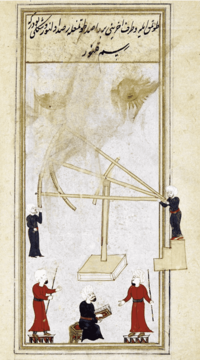
Fig. 1. Taqi al-Din’s sextant, c. 1526-1585, illustration in Âlât-i Rasadîya li Zîj-i Shah-inshâhîya. © Topkapı Museum Library, Istanbul.
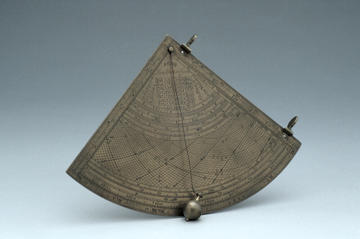
Fig. 2. Henry Sutton, quadrant, c. 1660-1669, brass. © History of Science Museum, University of Oxford.
I soon came to discover that this modification in design was no small matter, as it arose from a shift in the nature of geometry during the early modern period. As a scholarly pursuit, ‘axiomatic geometry by itself contains no assertions as to the reality which can be experienced’.[4] However, growth in trade and travel during the sixteenth century led to its practical value soon being realised. Merchants and surveyors needed to accurately measure time, distance, and altitude during their itinerant journeys, and the quadrant came to be the answer after it had shrunk down to a handy size. Compressed in these plates were ‘the Hours and Azimuth Lines, together with part of the Ecliptick and Horizon’, all of which gave its user extensive and accurate knowledge of everything from ‘any day of the Month’ to ‘the Suns Meridian Altitude’.[5] Detailed manuals in the vernacular were also produced as ‘Portable Volumn[s], for the use of young Practioners’ to explain the new innovation.[6] In this way, geometrical knowledge thus travelled out of the classroom and into the commercial sphere through competent, cheap, and mobile objects that would soon be found in every sailor’s pocket.
Apart from geometry, ingenious gadgets also helped to advance arithmetic, the branch of mathematics concerned with numbers. This came to me when I turned my attention to an unassuming instrument in the Orrery Collection: the slide rule (Fig. 3). Small and slender, it simply looks like a ruler that has been slightly enhanced with additional parts. Yet, this powerful analog computer is the precursor to the digital devices that we rely on today, for the slide rule greatly advanced computational methods amidst early modern England’s pivot to a fundamentally different number system.
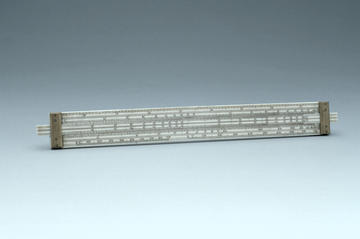
Fig. 3. John Rowley, slide rule, c. 1700, ivory and brass. © History of Science Museum, University of Oxford.
Roman numerals, which had once been the norm, were fixed values that replicated the intuitive process of counting; thus, they were frequently tallied with instruments comprising physical units, such as the abacus and the measuring rod. The demands of trade and commerce, however, soon necessitated much bigger calculations, which led to the introduction of Hindu-Arabic numbers and their nimble system of positional notation. It was amidst this context that the slide rule emerged: invented by William Oughtred in 1622 and based on John Napier’s newly developed concept of logarithms, its ability to rapidly multiply and divide large figures meant that it soon was picked up by mathematicians, merchants, and military personnel alike. The invention of the slide rule thus illustrates how an entirely new instrument can arise from developments in mathematical knowledge – and the fact that it was used all the way into the late twentieth-century, even when electronic computers were gaining ground, speaks to its powerful efficacy.
What the Orrery Collection is best associated with, however, is the orrery itself, a moving model of the planets that was named after the Earl. Prior to commissioning this mechanical marvel, the Earl’s interest in astronomy had already led him to collect a remarkable pair of planetariums which appear almost identical – save for the fact that one was geocentric, and the other heliocentric (Fig. 4-5).
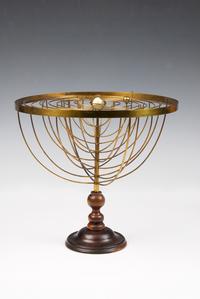
Fig. 4. John Rowley, Ptolemaic planetarium, c. 1700, brass and steel wire on wooden stands. © History of Science Museum, University of Oxford.
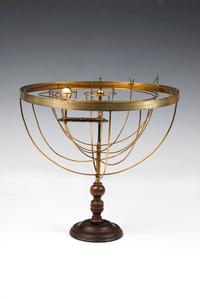
Fig. 5. John Rowley, Copernican planetarium, c. 1700, brass and steel wire on wooden stands. © History of Science Museum, University of Oxford.
That the instruments were part of a set signals that these two cosmological models were studied together, offering us a new way to consider the shifts in astronomical knowledge at the time. The abridged version of early modern astronomy would have it that Nicolaus Copernicus’s introduction of a heliocentric system radically unseated the Ptolemaic model of the past. However, this controversial rupture turns out to have taken place over a long stretch of time, altering the fabric of thought incrementally rather than instantaneously. In fact, ‘it was not until 1822 that the works of Copernicus were removed from the Index Expurgatorious of the infallible church’, which implies that the Ptolemaic system remained active in the cultural consciousness for centuries.[7] The endeavour to understand the universe never faltered throughout, and the invention of the moving orrery, an iteration of the static planetariums, only served to advance it (Fig. 6). One only needed to turn its dials, and its brass planets would be set off on their orbits – a dynamic experience of astronomical learning that attracted wonder from professors, scholars, and even children, as a well-known painting by Joseph Wright of Derby depicts (Fig. 7). Beautifully constructed and coloured by hand, this new device epitomises how education and recreation intertwined to glean new interstellar knowledge.
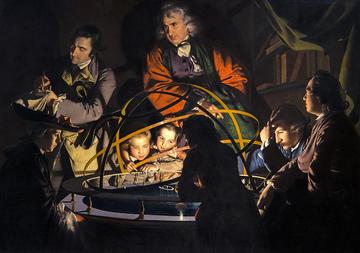
Fig. 7 'A Philosopher Giving that Lecture on an Orrery, in which a Lamp is put in the Place of the Sun', by Joseph Wright, exhibited 1766, oil on canvas. Image courtesy of Derby Museums.
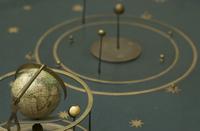
Fig. 6 Thomas Wright, orrery, c. 1731, painted brass and engraved plate. © History of Science Museum, University of Oxford.
Developments in the mathematical sciences can be traced in many of the Orrery Collection’s instruments, but these few devices stood out because each emerged at the threshold of a new way of thinking – a process that would seem to require a corresponding growth in mathematical literacy. I thus turned to the archival material in Christ Church Library and looked up the Earl’s inventories, whereupon I discovered more instruments, but ones that manifested in very unexpected ways. The first document was the hefty catalogue of the Earl’s original library, which contained mathematical tomes such as Euclid’s Elements that would have been studied by nearly every early modern scholar. Nestled amongst these more orthodox titles, however, lay an intriguing book that I had yet to come across: The Catholique Planisphear, published by John Palmer in 1658. It belonged to a genre known as the usus et fabria book – that is, the usage and device book, which ‘taught readers from a variety of socioprofessional groups the construction and use of instruments in great detail, and in a variety of languages’.[8] One of the most popular in the genre was John Blagrave’s 1585 The Mathematicall Jewel (which Palmer had based his Catholique Planisphear on), and it was even more fascinating for it did not just contain staid reams of words – instead, it combined theory with practice, explaining how to use mathematical devices alongside supplying a fully-functional paper instrument that cheaply substituted for its metallic original (Figs. 8-9).
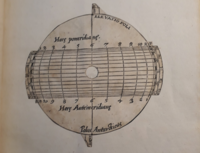
Fig. 8 John Blagrave, The Mathematical Jewel, print, (London: Imprinted by Walter Venge, 1585). © British Library, London.
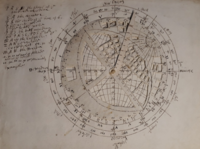
Fig. 9 John Blagrave, The Mathematical Jewel, hand-drawn insert, (London: Imprinted by Walter Venge, 1585). © British Library, London.
Books like these soon became extremely popular, propelling mathematical literacy to a rapidly growing readership. As an accompaniment to the new devices that were flooding the market, the mathematical book thus evolved beyond being about instruments to becoming an instrument in itself – a mode of praxis that facilitated the pursuit of knowledge for those outside of the academy.
The commercial appeal of mathematical instruments was underscored to me in the final piece of material that I viewed: the original inventory of the Orrery Collection. Written up in 1731 by Thomas Wright, the man who had constructed the Earl’s orrery, it was now discoloured by the passing of time and crumpled by fold-lines. However, Wright’s ornate handwriting remained intact despite these signs of wear and tear, and reading it revealed a different dimension to the items that I had seen (Fig. 10). In his meticulous catalogue, Wright not only named each item, but also carefully recorded details about their appearance: ‘A P[ai]r of Proportionable Comp[asse]s’, for instance, was described as ‘Silver in a Shagreen Case’, while ‘A Small Reflecting Tellescope on a Stand’ was noted for its ‘New Fashion’. Such appreciation of their material features brought the aesthetic value of these instruments to the fore. From the sophisticated planispheres (which would fit right into an Etsy catalogue) to the avant-garde mathematical books (which challenge the parameters of form like contemporary artist books), all of these technical apparatuses were both functional and beautiful – so beautiful, in fact, that they were assembled into rich collections such as the Earl of Orrery’s.
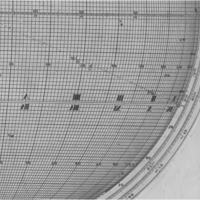
Fig.11 Detail of a print taken from Henry Sutton’s astrolabe. © History of Science Museum, University of Oxford.
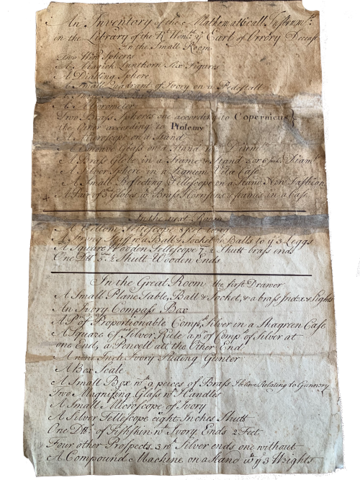
Fig.10 Thomas Wright, An Inventory of the Mathematicall Instruments: in the Library of the Right Honourable Earl of Orrery Deceast, 1731. © Christ Church Library Special Collections, University of Oxford.
Moreover, behind these creations were artisans who worked amongst other ‘specialist craftsmen who formed an identifiable and readily understood trade’; prominent names in this industry – John Marshall, John Rowley, Henry Sutton, Thomas Wright – can all be found in the Orrery Collection.[9] These makers even developed their own mathematical knowledge through the extremely precise techniques of their aesthetic practice. A print of Henry Sutton’s quadrant reveals as much: as Jim Bennett explains, ‘there is nowhere to hide faults in a challenging and detailed projection’, rendering this print ‘a demonstration of Sutton’s accuracy, skill, and command’ in mathematical measurement (Fig. 11).[10] In some sense, then, these makers were instruments in and of themselves, each contributing to the development of knowledge as a ‘person whose actions serve to bring about a result or accomplish a purpose’ in tandem with the ‘tool [...] used in delicate, precise, or skilled work’ that they created.[11]
*
Through spending time with the Orrery Collection, I was thus led down all sorts of rewarding avenues that expanded my initial inquiry into the interplay between objects and ideas. Instruments evidently played an important role in advancing abstract concepts, serving as epistemic tools that both embodied new forms of knowledge and contributed to their development. In turn, the use-value of these tools overlapped with their aesthetic-value, rendering their makers both engineers and artisans who bridged the divide between theory and practice, as well as between the sciences and the humanities. The rich insights derived from attending to items of obscurity illuminates the importance of a collective like Hidden Objects – and, much like Robert Gunther, I will be carrying this knowledge forward with the anticipation that another ‘Exhibition of Instruments’ will soon unfold.
Nicole Fan is an MSt student of English (1550-1700) at Somerville College whose interests emerge at the intersection of literature, art, philosophy, and science. Alongside her academic work, she runs a multimedia publication called The Primer and enjoys writing for magazines.
Find out more about the TORCH Heritage Programme here.
[i] R. T. Gunther, Early Science in Oxford, Vol. I: Chemistry, Mathematics, Physics and Surveying (1921) (London: Dawsons of Pall Mall, 1967), p. 378.
[ii] R. T. Gunther, Early Science in Oxford, Vol. I: Chemistry, Mathematics, Physics and Surveying (1921) (London: Dawsons of Pall Mall, 1967), p. 378.
[iii] Robert Burton, The Anatomy of Melancholy (Oxford: Printed by John Lichfield and James Short, for Henry Cripps, 1621), 2.2.4, p. 352.
[iv] Albert Einstein, ‘Geometry and Experience’, in Sidelights on Relativity (New York: Dover, 1983), pp. 25-56 (p. 34)
[v] Edmund Gunter, The Description and Use of a Portable Instrument (London, Printed by T. B. for H. Sanbridge, 1685), pp. 1-5.
[vi] Ibid.
[vii] R. T. Gunther, Early Science in Oxford, Vol. II: Astronomy (1922) (London: Dawsons of Pall Mall, 1967), p. 266.
[viii] Mario Biagiolo, ‘From Print to Patents: Living on Instruments in Early Modern Europe’, in History of Science, 44 (2006), pp. 139-86 (p. 164).
[ix] Jim Bennett, ‘Early Modern Mathematical Instruments’, Isis, 102.4 (2011), pp. 697-705 (p. 703).
[x] Jim Bennett, ‘‘That Incomparable Instrument Maker’: The Reputation of Henry Sutton’, in The Whipple Museum of the History of Science, ed. by Joshua Nall, Liba Taub, and Frances Willmouth (Cambridge: Cambridge University Press, 2019), pp. 83-100 (p. 85).
[xi] ‘instrument, n.’, 3a and 1b in The Oxford English Dictionary <https://www.oed.com/view/Entry/97158> [Accessed January 14, 2023].


